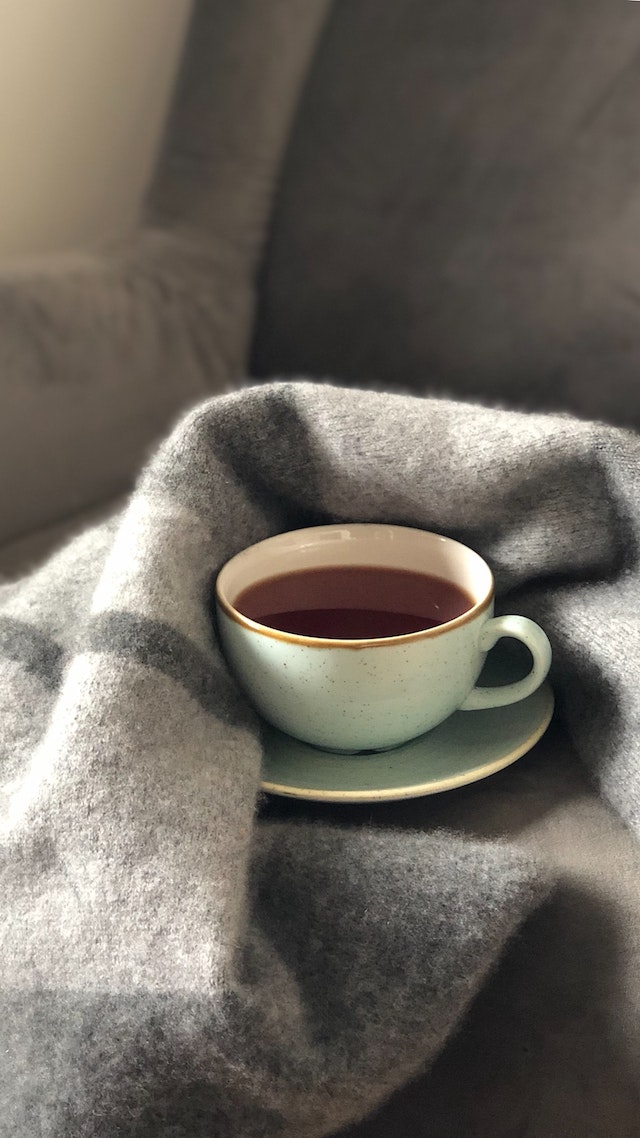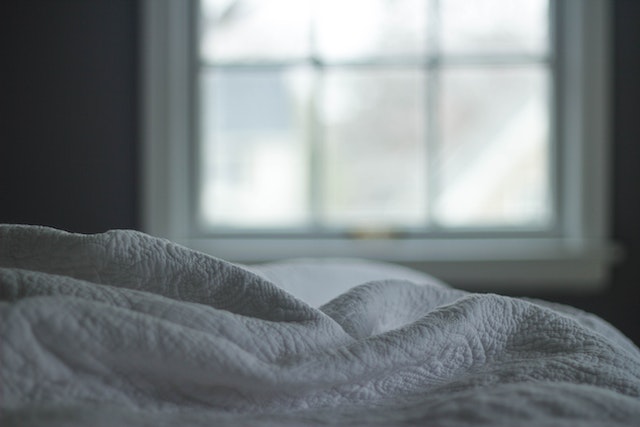A blanket is more than a mere piece of fabric. It is a symbol of comfort, warmth, and security that has been cherished by humans throughout history. Whether snuggled under a quilt during a cold winter night or wrapped in a blanket on a breezy summer evening, blankets are beloved and versatile items in every household. Let’s delve into the world of blankets, exploring their history, types, uses, and the science behind their warmth.
Contents
A Brief History of Blankets
The term ‘blanket’ is derived from the French word ‘blanchet,’ meaning a white, undyed woollen fabric. Historically, blankets have been made from various materials, including wool, cotton, and animal hides. They have served multiple functions, from providing warmth to functioning as trade items and symbols of status. Native American tribes, for instance, were known for their skillfully crafted and vibrant blankets.
Types of Blankets
Quilts
Quilts are composed of three layers: a top layer of woven fabric, a middle layer of batting, and a bottom layer of woven fabric. These layers are stitched together, forming intricate patterns.
Throws
Throws are smaller blankets, often used for decorative purposes or to provide a light layer of warmth.
Comforters
Comforters are thick, fluffy blankets filled with synthetic fiber or down, designed to keep you warm.
Electric Blankets
These blankets have built-in heating elements that allow users to control the temperature.
Weighted Blankets
Weighted blankets are filled with materials like glass beads or pellets, providing a sensation of deep pressure touch that can be calming.
The Science of Warmth
Blankets work based on the principle of trapped air. The fibers of the blanket create a network of tiny air pockets that trap warm air and retain body heat, acting as insulators. The thicker and denser the blanket, the better it holds the air and the warmer it becomes.
Uses beyond Warmth
Décor
Blankets, especially those with vibrant colors and intricate patterns, can make a statement piece in home décor.
Therapy
Weighted blankets have been shown to help people with anxiety, autism, and insomnia due to the deep touch pressure they provide.
Gifts
Blankets can be a thoughtful and practical gift, symbolizing the warmth and comfort of the relationship between the giver and the recipient.
Outdoor Activities
Blankets are essential for picnics, beach trips, and camping, serving as both seating and warmth.
Care and Maintenance
Proper care can extend the life of a blanket. Follow the care instructions on the label, which typically include recommendations for washing, drying, and safe storage. For wool blankets, in particular, avoid high temperatures and agitation to prevent shrinkage.
Sustainable Options
With growing environmental awareness, many companies are now producing eco-friendly blankets made from sustainable or recycled materials. Organic cotton, bamboo, and recycled polyester are popular options.
The blanket, a seemingly simple household item, has a deep and rich history intertwined with human life. It is a symbol of comfort, warmth, and care that transcends its basic function. Whether for snuggling on a cold day, adding a touch of décor to a room, or providing a sense of security through a weighted design, blankets hold a special place in our hearts and homes.
In this modern age, where sustainability is increasingly paramount, blankets continue to evolve. From high-tech electric options to eco-friendly materials, the world of blankets is as diverse and comforting as ever.
What kind of blankets are best?
The “best” kind of blanket largely depends on individual needs, preferences, and uses. Different types of blankets serve different purposes and offer various benefits. Below are some considerations for finding the best blanket to suit your specific needs:
For Warmth: Wool Blankets
- Pros: Wool is a natural insulator and retains heat exceptionally well. It is also breathable and wicks moisture away from the skin, making wool blankets warm but not overly so.
- Cons: Some people find wool to be itchy, and wool blankets can be heavy and expensive. They also require careful laundering to avoid shrinkage.
For All-Season Comfort: Cotton Blankets
- Pros: Cotton blankets are breathable and tend to be softer and lighter than wool. They are great for summer because they wick moisture away from your body and allow heat to escape, thus keeping you cool.
- Cons: They might not be warm enough for very cold winter nights.
For Luxury and Softness: Cashmere or Fleece Blankets
- Pros: Cashmere and fleece blankets are incredibly soft and luxurious. They are lightweight yet warm.
- Cons: Cashmere can be very expensive, and fleece may not breathe as well as other materials, potentially making you overheat.
For Therapeutic Benefits: Weighted Blankets
- Pros: Weighted blankets can help with anxiety, stress, and insomnia by providing a sensation of deep pressure that is calming to many people.
- Cons: They can be too heavy for some people, and they tend to be expensive.
For Energy Saving and Controlled Warmth: Electric Blankets
- Pros: Electric blankets allow you to control the temperature precisely and can help reduce heating bills in the winter.
- Cons: They can be a fire hazard if not used properly and are not recommended for people with certain health conditions or for children.
For Sustainability: Organic or Recycled Material Blankets
- Pros: Organic cotton, bamboo, and recycled polyester blankets are eco-friendly options that are soft and comfortable.
- Cons: They can be more expensive than non-organic options.
For Travel or Outdoor Use: Quilted or Packable Blankets
- Pros: These blankets are designed to be easy to carry and durable, making them ideal for picnics, beach trips, and camping.
- Cons: They may not be as comfortable or luxurious as other options.
For Decor: Throw Blankets
- Pros: Throw blankets are designed to be decorative and can add a pop of color or texture to a room. They are often available in a variety of patterns and materials.
- Cons: They are typically smaller and may not be sufficient for use as a primary blanket for warmth.
Considerations for Choosing the Best Blanket:
- Climate and Season: Consider the climate you live in and choose a blanket that is appropriate for the temperature range you experience.
- Personal Comfort Preferences: Think about whether you tend to be hot or cold at night and choose a material accordingly.
- Health Needs: For individuals with allergies, hypoallergenic materials like bamboo or hypoallergenic down alternatives are a good choice.
- Budget: Blankets come in a wide range of price points. Determine what you are willing to spend and find the best option within that range.
- Care Requirements: Consider how much effort you are willing to put into caring for the blanket. Some materials, like wool, require special care.
The best blanket for you depends on your individual needs and circumstances. Whether you prioritize warmth, comfort, health benefits, sustainability, or something else entirely, there is likely a perfect blanket out there for you.
Tips for cleaning blanket
Cleaning a blanket properly can significantly extend its lifespan and keep it fresh, soft, and inviting. Here are some general tips for cleaning blankets, but always make sure to read and follow the care instructions on the blanket’s label, as different materials have different care requirements:
Check the Care Label
- Before you do anything, check the care label on your blanket. This label provides valuable information on how to properly clean and care for the material.
Pre-Treat Stains
- If your blanket has any stains, pre-treat them with a stain remover or a small amount of liquid laundry detergent. Apply the treatment directly to the stain and gently rub it in before washing.
Wash Appropriately
- Some blankets can be machine washed while others, such as wool or delicate fabrics, may need to be hand washed or taken to a professional cleaner. If machine washing, use cool or warm water (not hot) and choose a gentle cycle to prevent damage.
Use Mild Detergent
- Opt for a mild, liquid laundry detergent. For wool blankets, use a detergent specifically designed for wool or delicate fabrics.
Avoid Fabric Softeners and Bleach
- Fabric softeners can leave a residue on blankets, and bleach can weaken and damage fibers. Instead of fabric softeners, use wool dryer balls or white vinegar to naturally soften the fabric.
Rinse Thoroughly
- Ensure that all the soap is rinsed out of the blanket. If hand washing, rinse with cool water until the water runs clear.
Drying
- If the care label allows, tumble dry your blanket on a low or no-heat setting. For wool or delicate blankets, air-drying is usually the best option. Avoid hanging wool blankets, as they may stretch; instead, lay them flat to dry.
Avoid Wrinkles
- Remove the blanket from the dryer while it is still slightly damp to prevent wrinkles. If air-drying, smooth out the blanket with your hands to shape it while it is still damp.
Storage
- When not in use, store blankets in a cool, dry place. Avoid plastic containers, as they can trap moisture and lead to mildew. Instead, opt for a breathable cotton storage bag or a clean, dry linen closet.
Special Considerations for Electric Blankets
- Most electric blankets are machine washable, but you must take special care. Disconnect all cords and controls, and never use an agitator-style top-loading washing machine, as this can damage the wiring. Always air-dry electric blankets—never put them in the dryer.
Professional Cleaning
- For some blankets, such as those made of cashmere or delicate antique quilts, professional cleaning might be the safest option. A professional cleaner can assess the best method for cleaning and preserving the integrity of the blanket.
Regular Care
- For blankets that are used frequently, shaking them out and airing them regularly can help to keep them fresh between washes.
Remember that over-washing can decrease the lifespan of your blanket. Unless the blanket is used directly against your skin, it doesn’t need to be washed as frequently as sheets or pillowcases. Always refer to the care label on your blanket for the most accurate and safe cleaning instructions.
Tricks for buying a blanket
When purchasing a blanket, considering a few essential factors can help ensure you end up with a product that meets your needs, comfort, and lifestyle. Here are some tips and tricks to guide you when buying a blanket:
Determine the Purpose
- Are you looking for warmth, decoration, a combination of both, or something portable for outdoor use? Knowing the purpose will help guide your material and style choices.
Choose the Right Material
- Different materials have different properties. For warmth, consider wool or down. For something lightweight and breathable, consider cotton. If you want luxury, look at cashmere or silk.
Check the Size
- Ensure the blanket is the right size for your bed or intended use. Blankets come in standard bedding sizes, but it’s always a good idea to check specific dimensions.
Test the Weight
- Some people prefer lightweight blankets, while others like the substantial, cozy feeling of a heavier blanket. Weighted blankets are specifically designed to be heavy and are used for their potential calming effects.
Consider Allergies
- If you have allergies, opt for hypoallergenic materials such as organic cotton, hypoallergenic down alternatives, or bamboo.
Read the Care Instructions
- Before you buy, check the care label. Make sure you are comfortable with the cleaning and maintenance requirements of the blanket.
Feel the Texture
- If possible, touch the blanket before you buy it. The texture should be appealing since it will be in contact with your skin.
Check for Quality
- Look for signs of good construction, such as tight, even stitching and finished edges. A well-made blanket will generally last longer.
Research Brands and Reviews
- Before purchasing, do some research on reputable brands and read customer reviews. This could provide insights into the blanket’s durability, comfort, and overall quality.
Consider the Season
- Quilts and lightweight cotton blankets are great for summer, while heavier wool or down blankets are ideal for winter.
Think About Sustainability
- If this is important to you, look for blankets made from organic or recycled materials, and check for certifications like OEKO-TEX or GOTS (Global Organic Textile Standard).
Set a Budget
- Blankets come in a wide range of prices. Decide what you are willing to spend before you start shopping and try to stick to it. Remember that, often, you get what you pay for in terms of quality and durability.
Check the Return Policy
- Make sure you can return the blanket if it doesn’t meet your expectations. Keep your receipt and be aware of the return window.
Feel the Weight of Weighted Blankets
- If you are buying a weighted blanket, the general recommendation is to choose one that is approximately 10% of your body weight.
Look for Sales and Discounts
- Quality blankets can be expensive, but you can often find them at more affordable prices during sales events, like end-of-season sales or Black Friday deals.
Buying a blanket may seem like a straightforward task, but considering these aspects can help you make an informed decision, ensuring that you invest in a blanket that will serve your desired purpose, is comfortable, and will last for years to come.
Size Chart Table of Blanket
Blanket sizes can vary slightly among manufacturers, but the following table provides common dimensions for various standard blanket sizes, in both inches and centimetres. It’s important to note that blanket sizes are not as standardized as mattress sizes, so it’s always a good idea to check specific dimensions before making a purchase.
| Blanket Size | Typical Dimensions (inches) | Typical Dimensions (cm) |
|---|---|---|
| Throw | 50 x 60 | 127 x 152 |
| Twin | 66 x 90 | 168 x 229 |
| Twin XL | 66 x 95 | 168 x 241 |
| Full/Double | 80 x 90 | 203 x 229 |
| Queen | 90 x 90 | 229 x 229 |
| King | 108 x 90 | 274 x 229 |
| California King | 102 x 108 | 259 x 274 |
Please note:
Throw blankets are designed for individual use and are perfect for snuggling up on the couch or in a chair. They are smaller than bed blankets and often come in decorative colours and patterns.
Twin, Twin XL, Full/Double, Queen, King, and California King Blankets are designed to be used on corresponding mattress sizes. They can also vary in size based on the design, whether they are intended to fall to the floor or just cover the top of the mattress, and whether they are meant to tuck under the mattress.
Twin XL is a size that fits the longer Twin beds commonly found in college dorm rooms.
When purchasing a blanket, consider how much overhang you prefer on the sides and end of the bed. Some people prefer a blanket large enough to tuck under the pillows and hang over the sides and end of the bed, while others may prefer a smaller size that just covers the top of the mattress.
Always check the specific dimensions listed on the packaging or label, and compare those to the size of your bed and your preferences for how the blanket will fit.

Frequently Asked Questions About Blanket
Here are some frequently asked questions (FAQs) about blankets, along with their answers:
- How do I choose the right size blanket for my bed?
Measure your mattress and consider how much overhang you want on the sides and at the foot of the bed. Compare your measurements with the blanket size chart and choose the closest size.
- How often should I wash my blanket?
Unlike bed sheets, blankets do not need to be washed weekly. Washing every 2-3 months is generally sufficient, but it depends on use. If the blanket is used daily, washing it more frequently may be beneficial.
- Can I wash a wool blanket in the washing machine?
Check the care label on your wool blanket. Some wool blankets can be washed in a machine on a gentle cycle with cold water, but others should be hand washed or dry cleaned.
- Is a weighted blanket right for me?
Weighted blankets are designed to provide a sense of calm and security, which can help with anxiety and sleep issues. They are generally recommended to be around 10% of your body weight. Consult with a healthcare professional before using a weighted blanket, especially if you have a health condition.
- Can electric blankets increase my electric bill?
While electric blankets do use electricity, they typically use less energy than it takes to heat your entire house. Using an electric blanket can be a cost-effective way to stay warm at night.
- Is it safe to use an electric blanket if I have a pacemaker?
Most manufacturers of electric blankets and pacemakers suggest that the devices are compatible. However, it is essential to consult with your doctor or healthcare professional before using an electric blanket with a pacemaker.
- How can I soften a scratchy blanket?
Try washing it with a mild detergent and 1/2 cup of white vinegar, which acts as a natural fabric softener. Avoid using commercial fabric softeners on wool or other natural fibres.
- Can I use a blanket as a comforter?
Yes, many people use plush, thick blankets as a comforter. If your blanket is warm and sizable enough to cover your bed, it can certainly be used as a comforter.
- How should I store my blankets during the off-season?
Clean your blankets before storage. Fold and store them in a cool, dry place. Avoid plastic bags or containers, which can trap moisture. Instead, use a breathable cotton bag or a space in a clean, dry closet.
- Can I use a heated blanket during pregnancy?
It is best to consult with a healthcare professional before using a heated blanket during pregnancy. They can provide advice based on your specific situation and any potential risks.
- What are hypoallergenic blankets, and do I need one?
Hypoallergenic blankets are made from materials that are less likely to cause an allergic reaction. They are beneficial for people who suffer from allergies or have sensitive skin.
Remember that while these answers provide a general guideline, it’s important to consult with professionals (like a doctor or vet for pet-related questions) or check with manufacturers for product-specific information. Always follow care labels on your blankets to ensure you are treating them in the best way possible.
Conclusion
Cute Blankets For You. Blankets are an essential part of our living spaces, offering comfort, warmth, and a sense of tranquillity. From the simplest cotton throw to the most luxurious cashmere blanket, they serve not only a functional purpose but also add aesthetic appeal to our homes. In choosing a blanket, several key factors come into play: the material, size, purpose, and care requirements are all crucial elements to consider.
Quality is paramount when selecting a blanket. Whether it’s for a cold winter’s night, for adding a splash of color to a room, or for wrapping up while watching a movie, a well-chosen blanket is an investment in comfort. Considering the size and material of a blanket is essential to ensure that it meets your specific needs, whether that is warmth, hypoallergenic properties, or ease of care.
Cleaning and maintaining your blanket properly is equally important. By following the appropriate care instructions—whether that means machine washing, hand washing, or professional cleaning—you can significantly extend the life of your blanket and keep it feeling fresh and cozy.
In recent years, innovations like weighted blankets and electric blankets have expanded the range of options available, offering therapeutic benefits and customizable warmth, respectively. These options, while beneficial for many, come with their own sets of considerations and precautions.
A blanket is more than just a piece of fabric; it is a companion that adds comfort and warmth to our lives. Choosing the right blanket is a personal decision that involves considering your lifestyle, needs, and preferences. With the vast array of options available today, you can find the perfect blanket that is not just functional but also a reflection of your taste and style.
Remember to invest in quality, read the care instructions, and most importantly, choose a blanket that makes you feel cozy and content. In a world that can be cold and harsh at times, having a warm and comforting blanket to wrap yourself in can be a simple yet profound pleasure.




